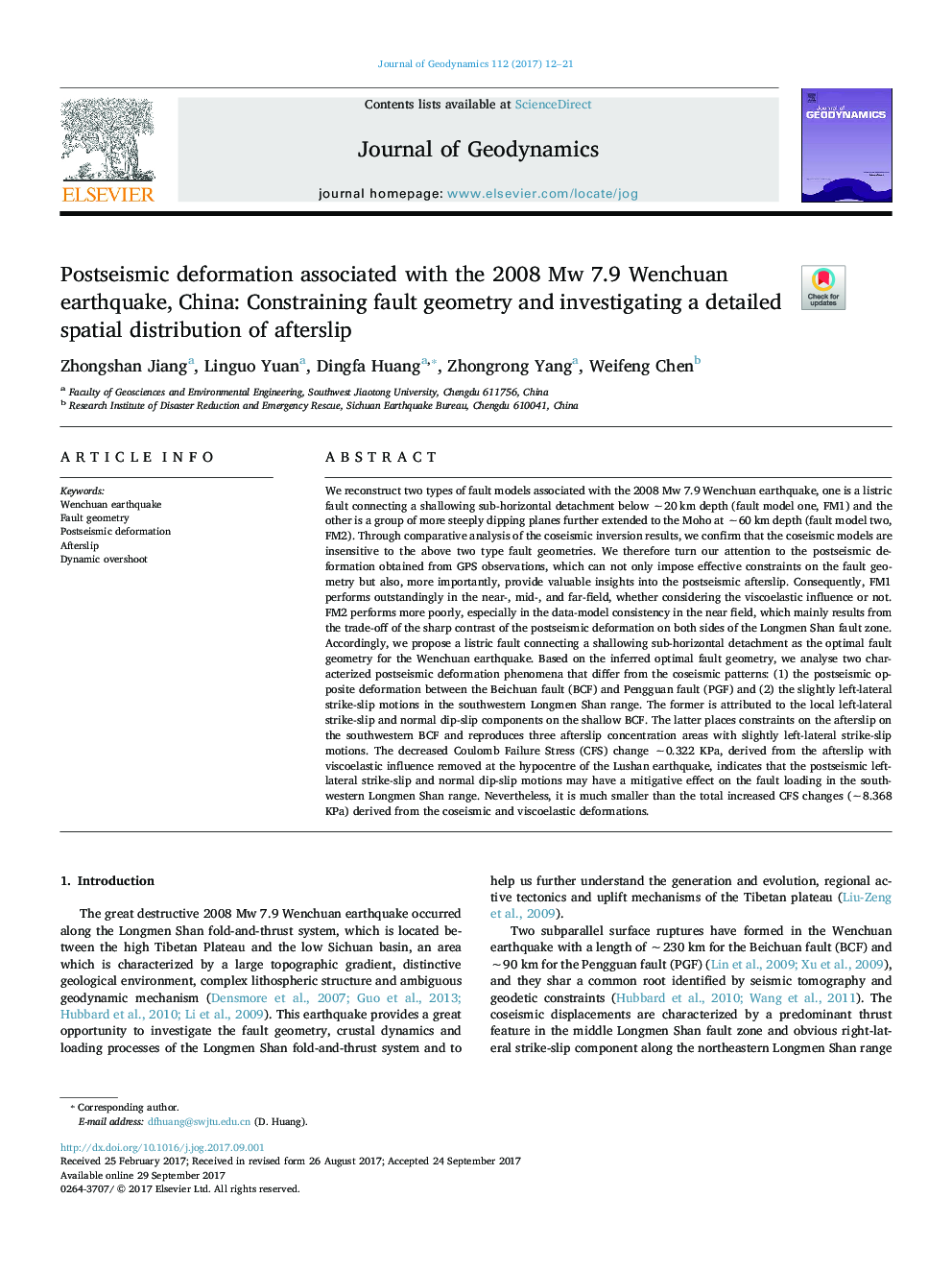| کد مقاله | کد نشریه | سال انتشار | مقاله انگلیسی | نسخه تمام متن |
|---|---|---|---|---|
| 8908437 | 1635738 | 2017 | 10 صفحه PDF | دانلود رایگان |
عنوان انگلیسی مقاله ISI
Postseismic deformation associated with the 2008 Mw 7.9 Wenchuan earthquake, China: Constraining fault geometry and investigating a detailed spatial distribution of afterslip
دانلود مقاله + سفارش ترجمه
دانلود مقاله ISI انگلیسی
رایگان برای ایرانیان
کلمات کلیدی
موضوعات مرتبط
مهندسی و علوم پایه
علوم زمین و سیارات
فرآیندهای سطح زمین
پیش نمایش صفحه اول مقاله

چکیده انگلیسی
We reconstruct two types of fault models associated with the 2008 Mw 7.9 Wenchuan earthquake, one is a listric fault connecting a shallowing sub-horizontal detachment below â¼20Â km depth (fault model one, FM1) and the other is a group of more steeply dipping planes further extended to the Moho at â¼60Â km depth (fault model two, FM2). Through comparative analysis of the coseismic inversion results, we confirm that the coseismic models are insensitive to the above two type fault geometries. We therefore turn our attention to the postseismic deformation obtained from GPS observations, which can not only impose effective constraints on the fault geometry but also, more importantly, provide valuable insights into the postseismic afterslip. Consequently, FM1 performs outstandingly in the near-, mid-, and far-field, whether considering the viscoelastic influence or not. FM2 performs more poorly, especially in the data-model consistency in the near field, which mainly results from the trade-off of the sharp contrast of the postseismic deformation on both sides of the Longmen Shan fault zone. Accordingly, we propose a listric fault connecting a shallowing sub-horizontal detachment as the optimal fault geometry for the Wenchuan earthquake. Based on the inferred optimal fault geometry, we analyse two characterized postseismic deformation phenomena that differ from the coseismic patterns: (1) the postseismic opposite deformation between the Beichuan fault (BCF) and Pengguan fault (PGF) and (2) the slightly left-lateral strike-slip motions in the southwestern Longmen Shan range. The former is attributed to the local left-lateral strike-slip and normal dip-slip components on the shallow BCF. The latter places constraints on the afterslip on the southwestern BCF and reproduces three afterslip concentration areas with slightly left-lateral strike-slip motions. The decreased Coulomb Failure Stress (CFS) change â¼0.322 KPa, derived from the afterslip with viscoelastic influence removed at the hypocentre of the Lushan earthquake, indicates that the postseismic left-lateral strike-slip and normal dip-slip motions may have a mitigative effect on the fault loading in the southwestern Longmen Shan range. Nevertheless, it is much smaller than the total increased CFS changes (â¼8.368 KPa) derived from the coseismic and viscoelastic deformations.
ناشر
Database: Elsevier - ScienceDirect (ساینس دایرکت)
Journal: Journal of Geodynamics - Volume 112, December 2017, Pages 12-21
Journal: Journal of Geodynamics - Volume 112, December 2017, Pages 12-21
نویسندگان
Zhongshan Jiang, Linguo Yuan, Dingfa Huang, Zhongrong Yang, Weifeng Chen,